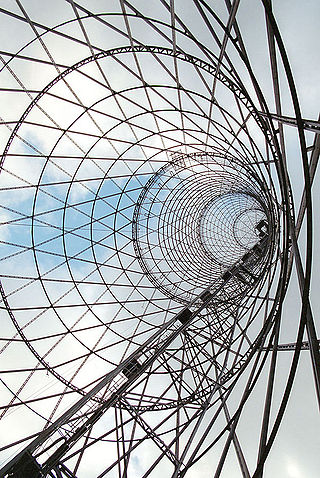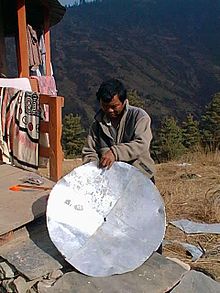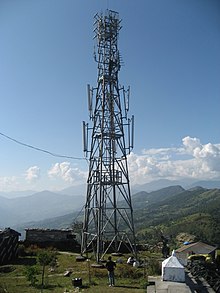Telecommunications in Mongolia face unique challenges. As the least densely populated country in the world, with a significant portion of the population living a nomadic lifestyle, it has been difficult for many traditional information and communication technology (ICT) companies to make headway into Mongolian society. With almost half the population clustered in the capital of Ulaanbaatar, most landline technologies are deployed there. Wireless technologies have had greater success in rural areas.

The telecommunications in Russia has undergone significant changes since the 1980s, radio was a major new technology in the 1920s, when the Communists had recently come to power. Soviet authorities realized that the "ham" operator was highly individualistic and encouraged private initiative – too much so for the totalitarian regime. Criminal penalties were imposed but the working solution was to avoid broadcasting over the air. Instead radio programs were transmitted by copper wire, using a hub and spoke system, to loudspeakers in approved listening stations, such as the "Red" corner of a factory. This resulted in thousands of companies licensed to offer communication services today. Due to the enormous size of the country Russia today, the country leads in the number of TV broadcast stations and repeaters. The foundation for liberalization of broadcasting was laid by the decree signed by the President of the USSR in 1990. Telecommunication is mainly regulated through the Federal Law "On Communications" and the Federal Law "On Mass Media"

3G is the third generation of wireless mobile telecommunications technology. It is the upgrade to 2G, 2.5G, GPRS and 2.75G Enhanced Data Rates for GSM Evolution networks, offering faster data transfer, and better voice quality. This network was superseded by 4G, and later by 5G. This network is based on a set of standards used for mobile devices and mobile telecommunications services and networks that comply with the International Mobile Telecommunications-2000 (IMT-2000) specifications set by the International Telecommunication Union. 3G is used in wireless voice telephony, mobile Internet access, fixed wireless Internet access, video calls and mobile TV.

Vivo, known as Vivo Brazil, is a brand of Telefônica Brasil, a subsidiary of Telefónica and the largest telecommunications company in Brazil. It is headquartered in the Brooklin Novo neighborhood of São Paulo.
Nepal Doorsanchar Company Ltd., popularly known as Nepal Telecom or NTC, is a state-owned telecommunications service provider in Nepal with 91.49% of the government share. The company was a monopoly until 2003, when the first private sector operator, United Telecom Limited (UTL), started providing basic telephony services. The central office of Nepal Telecom is located at Bhadrakali Plaza, Kathmandu. It has branches, exchanges and other offices in 184 locations within the country.
The Telecommunications Company Suriname (Telesur) is the government-owned full telecommunications service provider for Suriname. The services provided by Telesur include telephone, internet and wireless CDMA, GSM, UMTS, HSPA+ and LTE. Telesur is currently running a 900/1800 Mhz GSM, a 2100 MHz HSDPA, and a 450Mhz CDMA EVDO network.

Ncell Limited is a mobile service provider from Nepal. Ncell is Nepal's largest company in terms of revenue market share and second largest telecommunications company, after Nepal Telecom in terms of subscriber base. The company was founded in 2004.

América Móvil, S.A.B. de C.V. is a Mexican telecommunications corporation headquartered in Mexico City, Mexico. It is the 7th largest mobile network operator in the world in terms of equity subscribers, as well as one of the largest corporations in the world. América Móvil is a Forbes Global 2000 company. As of Q1, 2019, América Móvil had 277.4 million wireless subscribers, and 84.3 million fixed revenue generating units.

Chunghwa Telecom Company, Ltd. is the largest integrated telecom service provider in Taiwan, and the incumbent local exchange carrier of PSTN, Mobile, and broadband services in the country.

Sri Lanka Telecom PLC, doing business as SLT-MOBITEL, is the national telecommunications services provider in Sri Lanka and one of the country's largest companies with an annual turnover in excess of Rs 40 billion. The company provides domestic and corporate services which include fixed and wireless telephony, Internet access and IT services to domestic, public and business sector customers. As of 2018 SLT-MOBITEL was Sri Lanka's second largest mobile network operator with over 7.9 million subscribers.
Hutchison Asia Telecom Group or HAT, is a division of Hong Kong-based multinational conglomerate CK Hutchison Holdings. The division provides telecommunications services to several Asian countries. The division was formerly incorporated as Hutchison Telecommunications International Limited, known as Hutchison Telecom or HTIL in short. It was an offshore company in the Cayman Islands and a listed company in the Stock Exchange of Hong Kong. It operates GSM, 3G and 4G mobile telecommunications services in Indonesia, Sri Lanka and Vietnam under brands 3, Hutch and Vietnamobile.
Amalgamated Telecom Holdings Kiribati Limited (abbreviated ATHKL) is the sole communications provider to the Republic of Kiribati. Before a change of ownership, the company was known as Telecom Services Kiribati Limited or short TSKL. In addition to traditional telecommunication, ATHKL offers such services as telegram and facsimile services. Until 2007 the company maintained the country's ccTLD, .ki, which is now under the control of a separate agency, Telecommunications Authority of Kiribati.

Telecom Armenia OJSC is an Armenian broadband and telecommunications company. Telecom Armenia, an integrated telecommunications services operator, is headquartered in Yerevan.

China's mobile phone industry or cell phone industry has high growth rate, raising its share on the global mobile phone market. During 2007, 600 million mobile phones were made in China which accounted for over 25 percent of the global production. China is the largest market in terms of mobile phone subscribers.
3G mobile telephony was relatively slow to be adopted globally. In some instances, 3G networks do not use the same radio frequencies as 2G so mobile operators must build entirely new networks and license entirely new frequencies, especially so to achieve high data transmission rates. Other delays were due to the expenses of upgrading transmission hardware, especially for UMTS, whose deployment required the replacement of most broadcast towers. Due to these issues and difficulties with deployment, many carriers delayed acquisition of these updated capabilities.

3 Hong Kong is a telecommunications and internet service provider operating in Hong Kong by Hutchison Telecommunications Hong Kong Holdings, a subsidiary of CK Hutchison, operating under the global Three brand. 3 Hong Kong is the first Three-branded company, leading to the development of other operations in different locations.











